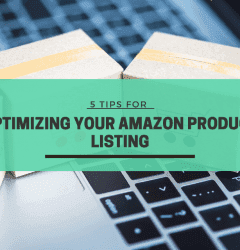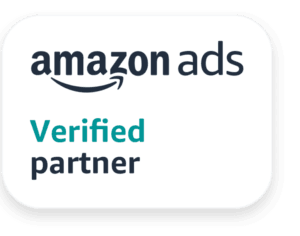This website uses cookies so that we can provide you with the best user experience possible. Cookie information is stored in your browser and performs functions such as recognising you when you return to our website and helping our team to understand which sections of the website you find most interesting and useful.
15 Nov

FBA vs. FBM vs. Others - Which is the Best Fulfillment Mode for Your Amazon Business?
If you are also a seller on Amazon or are looking to become one, then a problem you will likely face is that of choosing an option to fulfill your orders. There are a few ways of going about it, but the two most common methods that sellers use are:
- Fulfillment by Amazon (FBA)
- Fulfillment by Merchant (FBM)
Some sellers might also use a combination of both of these methods based on their needs. But what are the key differences between these two fulfillment methods? How do they stack up against other fulfillment options? And what are the pros and cons of using one of these services to reach your customers?
In this blog, we’ll be giving you a rundown of everything you need to know about the best fulfillment mode for your Amazon business.
FBA – Fulfillment by Amazon
In simple terms, Fulfillment by Amazon is a storage and shipping service that Amazon provides to sellers. This service is available to help sellers sell their products through Amazon itself. All the seller has to do is send their products to the Amazon warehouses or fulfillment centers specially designed for this. Amazon then receives, picks and packs the products before shipping them off to the customers. One of the best things about this service is that in case of any problem post-sale, Amazon also takes care of refunds, returns or customer service.
When does it make sense to use FBA?
- You don’t have the capacity to fulfill the orders yourself, or want to focus on your product more.
- Your products usually have a high sales velocity.
- You don’t have enough storage to store your products yourself.
- You cannot find a trustworthy delivery partner who would ship for you.
- You lack a logistics network, or it is not very strong at the moment.
- You cannot provide customer support yet.
- You don’t mind paying high FBA fees.
- You sell smaller, lighter items that are priced on the expensive side.
Pros of Using FBA
- One of the best features that come with FBA is that you get better visibility on the Amazon website.
- You get eligibility for Amazon prime.
- You do not have to worry about refunds, customer service or returns as Amazon processes them all.
- Storing and shipping the products aren’t your headache any more as you get convenient inventory.
- You get Buy Box advantages.
- People like buying products that come with Amazon FBA, so you have a better chance of selling your products.
Cons of Using FBA
- You will have lower profit margins due to fees incurred.
- You will have to pay pretty high FBA fees and also inventory storage fees.
- You do not have a lot of access to the inventory.
- You have no control over packaging or any other customer service-related matters.
FBM – Fulfillment by Merchant
Fulfillment by Merchant, also commonly referred to as Merchant Fulfilled Network (MFN) is the best alternative to FBA. With FBM, you are responsible for processing and shipping the orders by yourself. In addition to this, you must also provide customer service and process the returns and refunds, as and when the situation arises.
Since all the responsibilities here lie on your shoulders, you must have a concrete system in place to ensure that the business runs smoothly. Here are some of the requirements that you should ideally meet before thinking about opting for Amazon FBM:
- You have a storage space to properly and systematically store your inventory.
- You have a reliable logistics network that will ensure that all the products are delivered smoothly and on time.
- You can process orders quickly. This means being able to pack and label products efficiently.
- You have the necessary bandwidth to deal with all the post-delivery problems like customer service, returns and refunds. Just in case anything goes wrong.
When does it make sense to use FBM?
- You are capable enough to process all the orders, returns and refunds by yourself.
- The products you are selling have lower sales velocity.
- You have a trustworthy logistics network that can handle smooth and fast delivery.
- Most of your products are large, heavy and costly.
- You can easily provide proper customer support.
- You have great inventory storage.
- You need greater margins from selling your products.
Pros of using FBM
- You have more control over the packaging of your products.
- It is easier for you to track your inventory.
- You have better margins.
- You also have a greater ability to compete for the Buy Box if you qualify for Seller Fulfilled Prime
Cons of using FBM
- You have a lot of competition from FBA sellers.
- It comes with a lot more responsibilities like customer service, returns and refunds.
- More overhead costs.
Amazon Seller Fulfilled Prime (Amazon SFP) – Prime Benefits Without FBA
Amazon SFP or Seller Fulfilled Prime is very similar to FBM but it has a quirk that the former does not. Like FBM, sellers have to fulfill all the orders from beginning to end by themselves. But if they are on the SFP program, they will get a prime badge on their listings. This will provide them with all the associated benefits without them enrolling on the FBA program. This means qualified sellers do not have to pay those high FBA fees and still give healthy competition to FBA sellers. However, it is not very easy to get into the SFP program. Sellers and business owners have to fulfill all these requirements in 30 days if they want to join the SFP program.
- They have to ship more than 99% of their received orders on time.
- They must have a valid tracking rate of 99%.
- Their cancellation rate should be less than 0.5%.
- They must offer Premium Shipping to customers.
- They have to use Amazon Buy Shipping services for more than 98.5% of the orders that they ship.
- They shall allow Amazon to deal with all their customer inquiries.
- They have to deliver the order with a Seller Fulfilled Prime Carrier supported by Amazon.
- They must abide by Amazon’s return policies.
You can find a more detailed list of these requirements on the official website of Amazon. Since they get a chance to better compete for the coveted Buy Box through SFP, a lot of sellers try to get enrolled in this program. If the sellers fulfill all these requirements within 30 days, they will successfully be enrolled in the Amazon Seller Fulfilled Prime program.
Third-Party Fulfillment
As the name suggests, this is a fulfillment option where sellers outsource the order, inventory and shipping management to a 3PL or third-party logistics company. They usually handle the whole process from receiving your inventory to restocking or returning items. This is a great option for sellers who do not have the bandwidth to have FBM but also do not want to pay the very high FBA fees. Usually, these 3PL companies have the logistics and network to deal with a large number of orders every day. They can also negotiate bulk shipping charges with carriers just because of the sheer amount of shipment they send out every day. The 3PL staff will not only handle shipment but all the pre and post-delivery problems as well. They will receive, pick, pack, label, ship, process returns and control quality, along with other necessary and specialized projects.
All 3PLs are unique. They also provide an array of customizable services that the sellers can choose from. These offers include kitting, B2B orders, custom packaging, temperature control or refrigeration and also FBA prep. They offer a lot of different services depending on your needs.
Pros of Third Party Fulfillment
- You can purchase the inventory in bulk to improve your profit margins.
- You do not have to invest into things like warehouse space, WMS software, or even workers to pick and pack orders for you.
- It is really convenient to outsource the whole fulfillment process to professionals who do this every day.
- You will get a lot more off of shipment fees than if you negotiated with carriers on your own.
Cons of Third-Party Fulfillment
- One of the main cons of 3PL fulfillment is that the quality of your products can be compromised.
Conclusion
The purpose of this article was to clear up all the doubts you might have about the different fulfillment methods, especially FBA and FBM. As for which one you should choose? Well, that depends on your requirements. Choosing between these fulfillment methods can be a little tricky because each has their own benefits and drawbacks. However, deciding the ideal option for your business all comes down to the products you sell and the way you want to handle your business operations.
Related Post
Industries Served
United States
India













